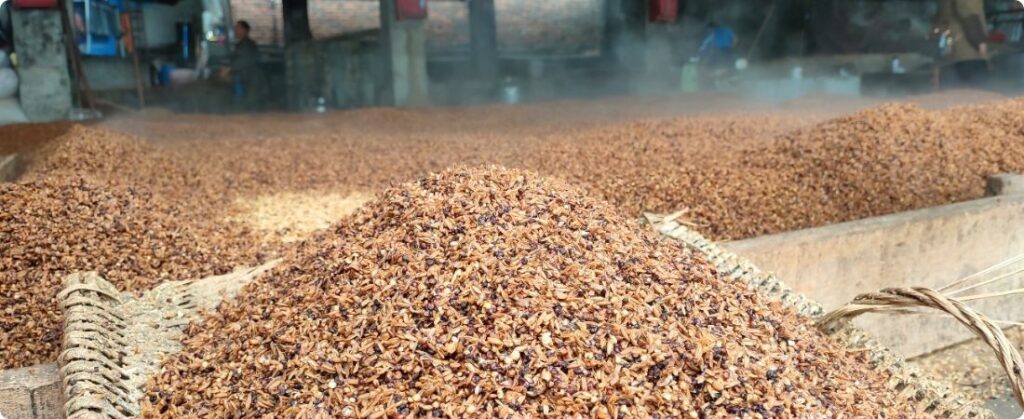
Brazilian exports of corn bran used for animal nutrition, the so-called DDG/DDGS, doubled in 2023 compared to 2022. In total, 608,955 tons were sold, which generated US$ 180.518 million. A year earlier, international sales of DDG/DDGS totaled 278,677 tons and US$ 91.151 million. Stimulating corn bran exports is foreseen in the DDG/DDGS 2023-2025 Corn Meal Export Promotion Sector Project, the result of an agreement between the National Corn Ethanol Union (Unem) and the Brazilian Export Promotion Agency and Investments (ApexBrasil).
DDG/DDGS are products of the corn and cereal ethanol industry and used as portion in the production chains of cattle farming, pig farming, poultry farming, fish farming and pet food. With the growth of the corn ethanol sector, supported by the strategy of promoting biofuels as an alternative for the energy transition, Unem and ApexBrasil developed a program that will add value to agribusiness exports while increasing the supply of corn meal. corn for animal protein production.
In this context, some markets were consolidated in 2023, such as Vietnam, New Zealand, Spain, Egypt and Turkey. Vietnam and New Zealand led consumption of Brazilian DDG, with 42% and 20% of exports, respectively. Next come countries such as Spain, Egypt, Türkiye and South Korea.
Unite structure exports and value Brazilian DDG/DDGS in the global market
The executive president of Unem, Guilherme Nolasco, explains that exports are being structured so that the Brazilian product has a market, especially given the prospect of increased production of DDG/DDGS in Brazil. Furthermore, the Agreement with ApexBrasil is also enabling studies to structure communication and promotion of bran and, consequently, its valorization.
“As it is a relatively new product for the national industry, we identified the need to analyze existing markets, products from other countries, and then standardize and position the Brazilian DDG/DDGS. With this, in addition to the market, we will also have appreciation and competitiveness of our products”, explains Nolasco.
Andréa Veríssimo, international relations manager at Unem, emphasizes the benefits of expanding markets for the Brazilian DDG/DDGS. “There is international demand and Brazil arrives as a new player that could increase the availability of this product on the world market, contributing to protein production and also to the pet food sector.”
Historic
Exports of DDG/DDGS from Brazil began in 2020, but expanded globally after 2022, driven by the pandemic. In 2020, Brazil moved US$ 17.5 million with the sale of the product, in 2021 this value fell to U$ 1 million and, in 2022, it rose to US$ 91.1 million and in 2023 it reached U$ 180.5 million.
The origin of the products is mainly Mato Grosso, with 83.7% of the market, which corresponded to US$ 151 million in 2023. Next is Mato Grosso do Sul, which moved US$ 23.6 million and was responsible for 13% of revenue total. This is because the largest corn ethanol industries are located in these two states. Mato Grosso produces 71% of the country's corn ethanol and, in the 2023/2023 harvest, which ends in March, will make 3.39 billion liters available. Meanwhile, Mato Grosso do Sul will produce 1.02 billion liters and Goiás 720 million liters. They will produce a total of 6.17 billion liters of corn ethanol, representing 17% of national ethanol production.
Production
The industry uses “DDG/DDGS”, an acronym in English, for dried distillery grains resulting from the processing of corn for ethanol. Each ton of corn processed in an ethanol industry produces 430 liters of biofuel, 363 kilograms of DDG/DDGS and 13 kilograms of corn oil. In the current harvest, the production of 3 million tons of DDG/DDGS is estimated.
Source: Unem | Notícias Agrícolas










